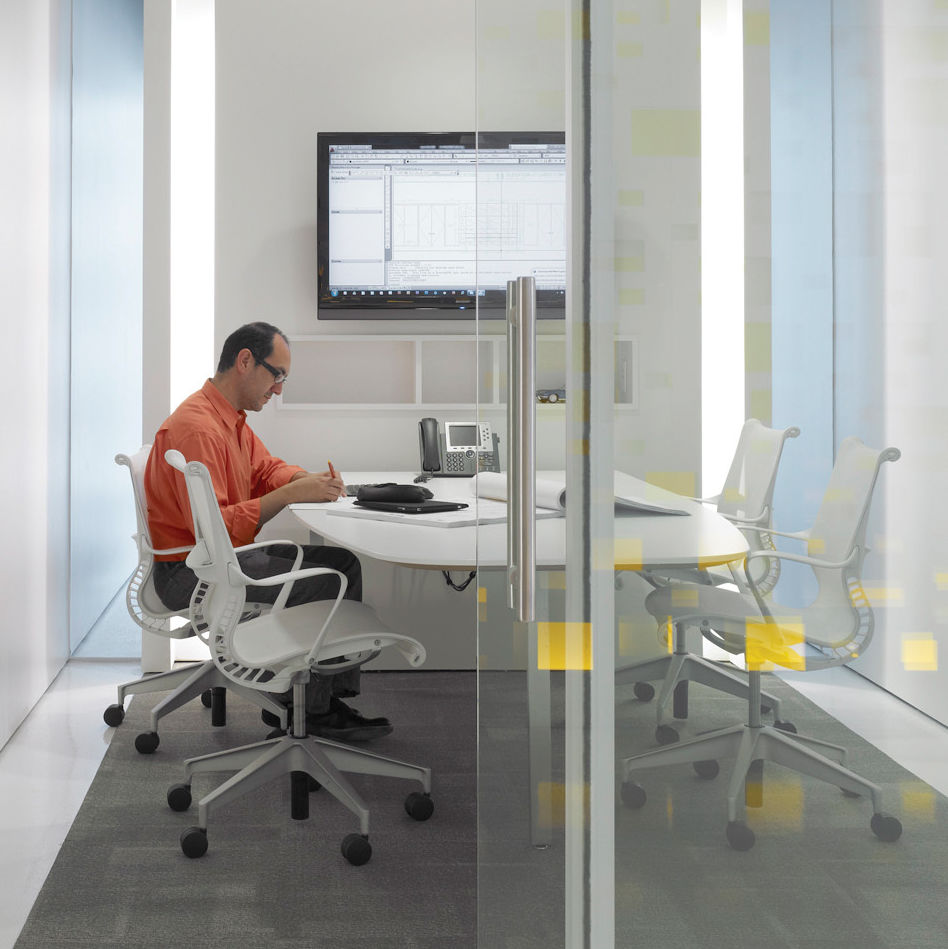The Secret to Happy Employees? A Great Office Culture

Image: Max Burkhalter
Think of the workplace of your dreams. Does it have treadmill desks, or are there unlimited cupcakes in the breakroom? Do you have a private office with views of downtown, or a shared space in a gritty converted warehouse with a rooftop garden? Is there a private cafeteria with take-home dinner options, or do you take clients out to lunch with a company card? What about a nice end-of-year bonus? A flexible, work-from-home schedule?
Depending on your personality, lifestyle, and type of work, you probably have your own unique concept of the ideal office perks. But culture, it turns out, goes a lot deeper than that. “The Googles of the world, of course, they have all the incredible perks and benefits and fitness centers and childcare,” says Richard DeFrank, a professor at UH’s Bauer College of Business. DeFrank has studied the effects of stress on employees in a range of occupations, from nurses to teachers to small-business owners to firefighters. And he’s learned that a lot of negative stress—the kind that’s damaging to employees’ health and wellbeing—comes from the lack of a positive workplace culture.
For all the things a heavyweight company might offer, DeFrank’s research shows that the most important thing for a happy workforce doesn’t involve bells and whistles at all. “A lot of organizations don’t have the money to do the big things, but it’s the small things—how do you treat the employee? Are they a cog in the wheel, do they feel replaceable? How do you interact with them? Do they sense that you are concerned about them?” he asks. “The more you pay attention to your employees, the more they feel, This is someone I’m going to do my best for.”
There’s research that shows that companies with a positive workplace culture have higher profits, more job applicants, and more employees who want to stick around. “It’s expensive to lose people and expensive to replace them,” DeFrank says. “Organizations that are successful and are felt to have good cultures, they do a lot of what they do to minimize turnover.”
A supportive environment starts at the top. In DeFrank’s organizational behavior class, he asks students to describe a good manager they’ve had. “They say, They’re thoughtful, supportive, they listened to my concerns, they tried to help me become better,” he says. And then he asks them to describe a bad manager. “They micromanaged, they didn’t care, they were inconsistent, they lied to us.”
“But what’s fascinating,” DeFrank adds, “is that almost never does anyone say their manager did or didn’t know the job itself. It’s how they treated people, how they interacted with employees.”
Forty hours per week is a lot of hours. It’s no wonder that stress from the job seeps into our relationships, our families and the rest of our off-the-clock lives. And stressed employees are shown to make more mistakes, have lower job satisfaction, and quit at higher rates. “We don’t want to get rid of stress,” DeFrank emphasizes. “If there’s no stress in the workplace, everyone’s lying around eating grapes and no one’s getting anything done.” But it’s unnecessary stress—unclear job roles, overloaded days, unresponsive management, interpersonal conflict—that gets in the way of getting a job done.
“If you decrease distractions and make life easier for your employees,” DeFrank says, “they’re going to give more to the organization.”









